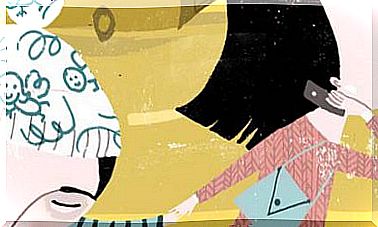PAS: 7 Keys To Living With High Sensitivity
If you know how to channel it well, being highly sensitive is not a problem, on the contrary, it is extraordinary.

The first memories of my childhood are sensations. The beginning of the year had a euphoric smell of autumn and printing; the sunflower fields of the town where he spent his summers sounded like loneliness, death and mystery. Saturday night was sweet and sparkling, while Sunday afternoons choked on my esophagus rough and gray, but delightfully melancholic.
I could never stop feeling.
PAS: Highly sensitive people
She lived immersed in a bubble that amplified to infinity everything she captured between the lines in each gesture. It was as if he had extra glands lodged in his gut that secreted gushing sensitivity. I sensed, felt and absorbed the most hidden glimpses of the heartaches and exaltations of those around me.
She lived exposed to emotional radiation, without filters.
Turn it into a gift
I guess I am among that 20% of the highly sensitive population of people (PAS). We have highly developed senses – we usually have some sensory perceptions above normal -, aware of very subtle things in the environment.
We are also creative, we are easily moved by art, by music, we are very empathetic and we have a great capacity for listening.
Some are introverts, shy, but 30% of highly sensitive people are actually extroverts
We do not have any disorder or pathology and nothing bad happens to us. Being PAS is having certain personality traits that, well channeled, can become a gift for ourselves and for those around us.
An extrasensitive brain, how does it work?
A highly sensitive person has great potential to do extraordinary things if he knows himself well and learns to channel the excess information he absorbs due to a more developed sensorineural and perceptual system. Science has taken care of knowing ourselves better and we have data that allows us to know what makes us who we are.
The latest studies on the brain indicate that the right hemisphere of the PAS is more active. It is the area related to emotions, feelings and creativity.
Within it, the frontal area and the amygdala are in a higher than average state of alert. These structures light up more on MRI tests.
- The frontal lobe is a center for the processing of social information and is a key piece in the circuit of empathy. Their hyperarousal translates into highly empathetic people with a superior ability to understand the emotions of others and offer an appropriate response to their needs.
- The amygdala is the center of the emotional brain and those who have it more excited experience emotions with greater intensity.
The neuroimaging of the PAS brain is full of color wherever there is social, emotional, sensory, and creative activity.
A beautiful brain, but sensitive and delicate, since, as a result of this state of over-alert, the nervous system can become saturated and suffer from stress and physical problems.
More sensitive babies: more contact
These traits are usually manifested from birth. In fact, high sensitivity has a significant genetic load. There are babies who are restless and react to everything: they are very sensitive to changes, to textures, to temperature; they sleep very little and need a lot of physical contact. You can’t leave them alone in bed because their alert system kicks in and they cry right away.
We all need to feel loved and protected to be able to trust the world, but very sensitive babies present a plus in the demand for attention that their parents have to cover.
A secure bond will contribute to your emotional stability as adults.
It is very important to help these children to get to know each other better and to seek strategies to have a more comfortable life and to develop their wonderful abilities.
Many can have a hard time in school if they do not have the correct orientation, and, when they reach adolescence, have conflicting social relationships or end up isolated.
Art is therapy
Although we find them in all professions, many of the PAS possess artistic talent. It is believed that 99% of the artists are PAS. Sensitivity is the essence of the artist, who has the sublime ability to communicate what he thinks and what he feels and to make the viewer vibrate in his same emotional wave and be moved by the feelings that the work transmits.
In addition, art for a PAS is a form of therapy, since it allows her to talk about her conflicts and express herself through other languages, without doing it directly.
Stress and other risks of saturation
His nervous system is very refined and reacts to the slightest stimulus. Sensitivity to temperature, textures and noise is much higher. They also tolerate pain and alcohol worse, and need lower doses of most medications.
They are excellent receiving antennas, but they have the risk of being easily saturated. They absorb all the sensory information from the environment and cannot always drain it or unblock themselves.
This situation can degenerate into anxious and depressive processes and into diseases of the immune system. There are PAS that have a long history of doctors and treatments without results, since, in reality, the only thing they have is that characteristic of high sensitivity.
7 keys to living with high sensitivity
1. Accept it without further ado
You are not sick, you have a character trait that says something about the way you see the world. Consciously embrace that side of your being and you will be able to channel it in your day to day life and recognize it as a gift.
Everything that is denied grows stronger and turns against you.
2. Observe yourself carefully
Investigate how your sensitivity affects you, in what areas it causes you problems and when. See if you were stressed at that time, if you were tired, or if you were hungry.
Look for patterns and repetitions.
3. Learn to say “no”
You absorb an amount of information that saturates you before others. Learn to say “no”, take a controlled exposure to stimuli, and take time to recharge your batteries.
4. Tricks to not saturate yourself
Do physical exercise (better gentle and in contact with nature), practice meditation ( mindfulness ), work your breathing with energy techniques, paint, play an instrument, sing or do theater …
5. Contact others
Look for a group and if you can’t find it, organize one yourself. Getting to know other people like you and learning from each other will help you. You will see that many things that made you feel strange are normal for the vast majority of PAS.
6. Find your PAS model
There are great artists and people committed to the welfare of humanity who can serve as an example. Comparing yourself to this type of person inspires, while comparing yourself to the “toughest” lowers your self-esteem.
7. Create your sacred space
Try to be completely alone with as little sensory input as possible, when you need to disconnect. Everyone is different, but most PAS make the most of darkness and silence.









